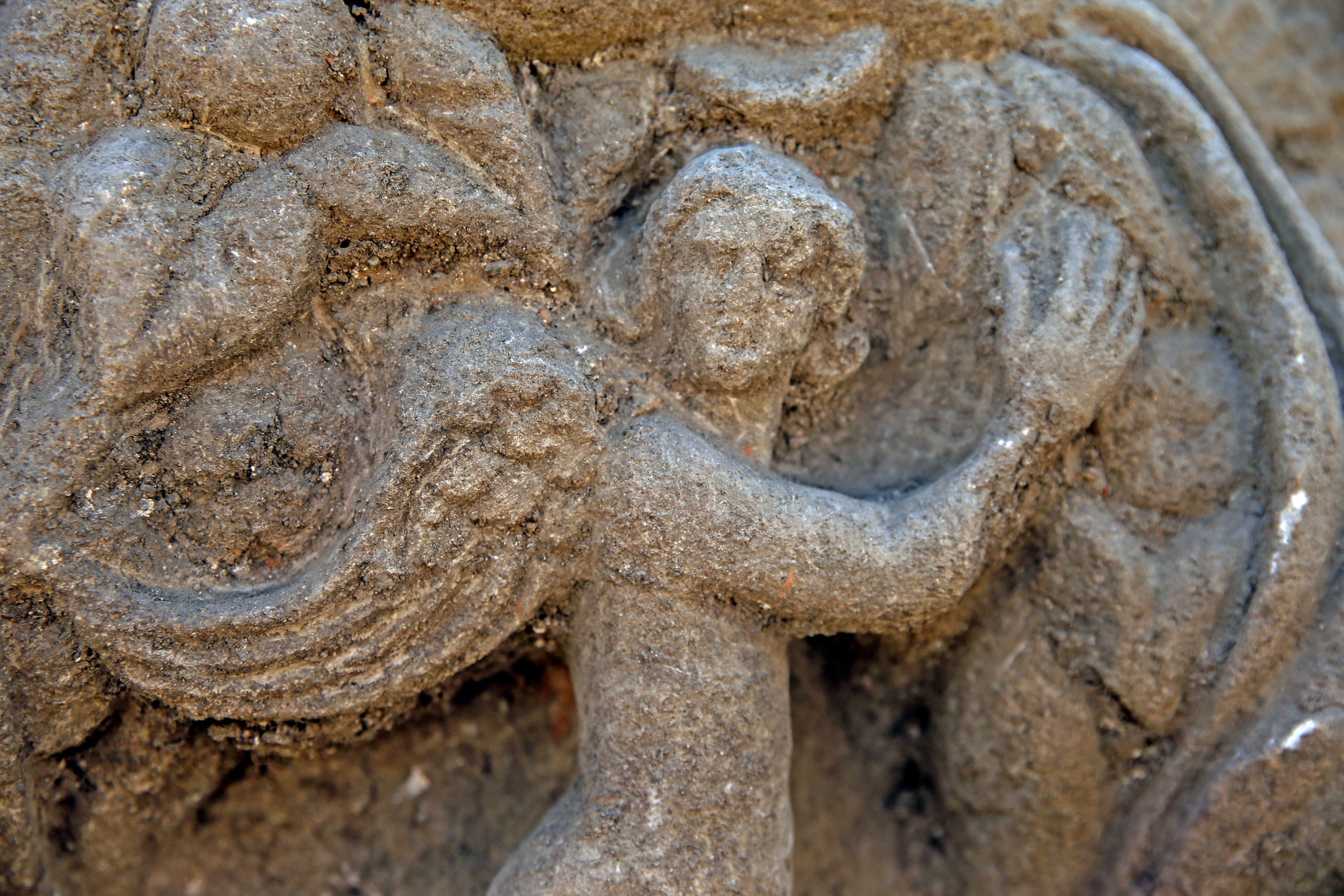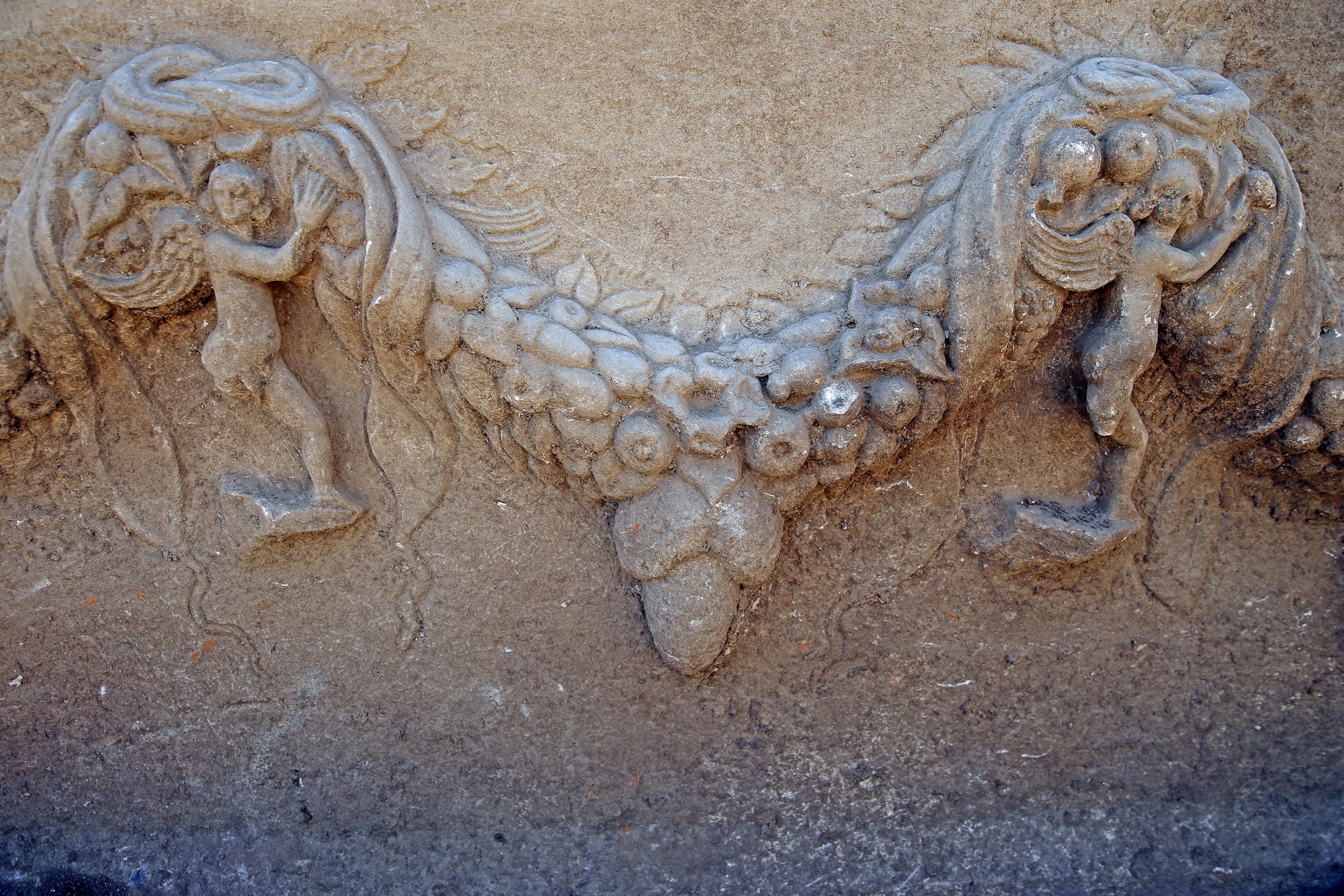© Turkuvaz Haberleşme ve Yayıncılık 2025
During ongoing excavation efforts in the ancient city of Stratonikeia, located in the Yatağan district of Muğla, southwestern Türkiye, a garlanded sarcophagus dating back 2,000 years has been uncovered. Stratonikeia, listed on the UNESCO World Heritage Tentative List and known as the "City of Gladiators," is also regarded as one of the largest marble cities in the world. Excavations at the site, which began in 1977, continue throughout the year.
The ancient city, which was important not only during the Hellenistic, Roman and Byzantine periods but also during the Menteşe Beyliği, Ottoman and Republic eras, remains a hub for significant archaeological discoveries. New artifacts are regularly uncovered, and efforts to restore historical buildings are underway.
Professor Bilal Söğüt, the head of the Stratonikeia and Lagina Excavation Team, explained to an Anadolu Agency (AA) correspondent that they have been conducting archaeological excavation, restoration and mapping studies across various structures that have survived from different ancient periods in the city, one of the most significant in the Caria region.

He noted that since last year, the excavations have been part of the "Heritage for the Future Project." One of these projects includes excavations in the Agora, a central area surrounded by public buildings where political, religious and commercial activities took place in ancient times. "In the Agora, we are excavating the Late Antiquity Period. During these excavations, we found a garlanded sarcophagus, which had previously been moved from the necropolis, the city's cemetery, to this location," said Söğüt.
Söğüt emphasized that the newly uncovered sarcophagus is one of the most beautiful examples in the city's collection of sarcophagi. He pointed out that sarcophagi were produced in Stratonikeia during the ancient period, and there are records indicating that some were even exported to other locations.
The sarcophagus features ram heads at the corners, as well as depictions of Eros (the god of love, often portrayed as a child) and bull heads in the central sections. "This sarcophagus is one of the best examples of garlanded sarcophagi, both in terms of its variety of figures and the clarity with which we can determine its age. Especially in our work in Stratonikeia, we now possess the most beautiful sarcophagus base in the city," he remarked.

Söğüt emphasized the liveliness of the figures surrounding the sarcophagus, explaining, "The richness, grandeur and opulence of the era from nearly 2,000 years ago can still be seen here. The plants, particularly the garlands, are beautifully and intricately crafted. The ram heads at the corners, along with the pine cones, vine, olive leaves, grapes, pomegranates and poppies depicted around them, all reflect the wealth and magnificence of the period. Even when you look at the ram heads, you can understand the wealth and splendor of that era. The bull heads on the narrow edges and in the central parts are some of the details that complete the figures."
The excavation work in the region continues, and every new excavation brings hope for discoveries and exciting results. "Every shovel stroke could bring us new hope, new artifacts and wonderful findings," he added.
Söğüt mentioned that the newly discovered sarcophagus will be displayed in the area where other similar sarcophagi are exhibited, allowing visitors to the ancient city to view it. He also highlighted that each year, the excavations in Stratonikeia yield important data, reinforcing the idea that the city remains a "living archaeological site."
